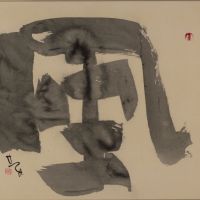Bakuzan Sakaki (1926-2010) began pursuing calligraphy after World War II, entering his work in various prestigious calligraphy contests in Japan. Through intense research and study of Chinese and Japanese calligraphy history, he developed his own unique theory of aesthetics.
His ground-breaking approach in expressing kanji such as "土" (tsuchi, soil), "女" (onna, woman) and "樹" (ki, wood), combined with his affable personality and frequent TV appearances, made him immensely popular in Japan.
Some of Sakaki's most outstanding examples have been selected for this exhibition; till May 20.
Mie Prefectural Art Museum; (059) 227 2100; 11, Otani-cho, Tsu-shi, Mie; Tsu Station, Kintetsu Nagoya Line. 9:30 a.m.-5 p.m. ¥ 1,000. Closed Mon. www.bunka.pref.mie.lg.jp/art-museum/index.shtm.

















With your current subscription plan you can comment on stories. However, before writing your first comment, please create a display name in the Profile section of your subscriber account page.